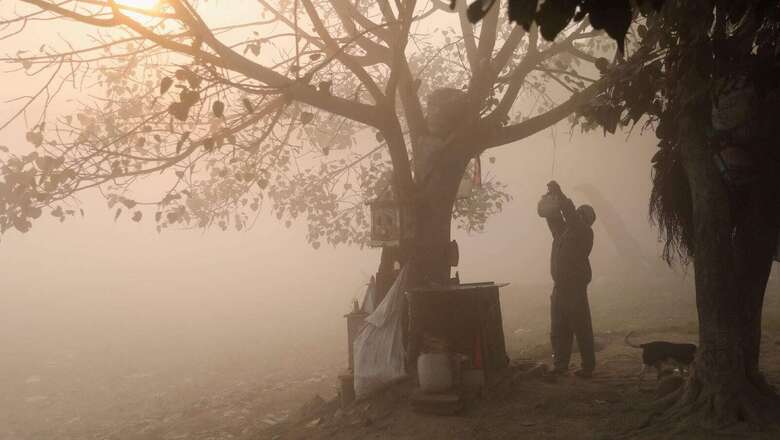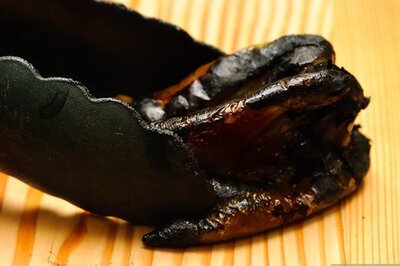
views
Do you know that our ancestors had such a deep observation and understanding of plant and tree life that they even knew how to re-join the amputated branch of a tree with plaster? Yes, you heard it right! The knowledge they compiled about plant life and its longevity is in the form of a treatise known as Vrikshayurveda which was written way back in 1000 A.D. by Surpal. Some scholars suggest that this compilation of Vrikshayurveda dates back to 2nd Century B.C.
We are familiar with the Indian science of health and longevity, that is, Ayurveda, which focuses on human health in a holistic manner. If Ayurveda is India’s gift of human health to the world, Vrikshayurveda is the gift of plant health to the world by the Indian civilisation. ‘Vrikhsa’ means trees and Ayurveda means the science of longevity. So, Vrikshayurveda means the science of longevity and the health of plants. It is the ancient Indian science of plant life. The knowledge of Vrikshayurveda has its roots in the Vedas, especially Rigveda and Atharvaveda.
If we see the population of the world, we can categorise them into two categories, viz, vegetarians, that is, those people who primarily eat plant-based diets and non-vegetarians who eat creatures who in turn eat plants. So, in both cases, the health of human beings is exclusively dependent on the health of plant life! This fact and law of nature were well recognised by the ancient Indian observers which were further given shape by Surpal.
Vrikshayurveda is a systematic compilation that starts with the glorification and veneration of trees and tree planting. It is the most comprehensive and detailed treatise on plant life which various topics related to the science of plant life such as procuring, preserving, and treating seeds before planting; preparing pits for planting saplings; selection of soil; method of watering; nourishments and fertilizers; plant diseases and plant protection from internal and external diseases; layout of a garden; agricultural and horticultural wonders; groundwater resources; and so on.
Why Plant trees
Vrikshayurveda enunciates the Indian ethos on plants and trees, environment and ecology. As per Vrikshayurveda, trees are our ancestors and are existing here on this Earth much before human beings. Our very existence depends upon them. Trees are equated with Gods. Planting and nourishing a tree is a sacred duty of every human being and is one of the ways to attain Punya-Karma (virtues). Planting trees is not only a religious and social-duty but a way to pay back one’s debt to Mother Earth and attain Moksha. According to Vrikshayurveda, one who plants trees enjoys prosperity and happiness in this and in many lives to come. Such are the virtues of planting trees that the whole family of the person who plants trees enjoys bliss and richness in this world and in the after-world.
Also Read: Step Up Your Productivity By Turning Your Office Into a Green Office With These 10 Habits
It is mentioned that one who plants a fruit tree, his Pitra (ancestors) remain contended till the tree bears fruit. In one verse, trees are hailed even more virtuous than ten sons! Plants are considered an integral part of even our household. It is mentioned that one who plants and worships Tulsi in his house, he and his family will attain Vaikunta (permanent- salvation) not only in this world but in the after-world. Planting trees is hailed better than even constructing buildings.
It gives a detailed description as to when to plant the tree, how to plant the tree, where to plant the tree, which trees are to be planted when and where, how to take care of the saplings, how and when to water them; and interestingly how to heal or cure them in case they fall ill!
How Vrikshayurveda is relevant in the Modern Era
Like the modern scientific and botanical division of plants, Vrikshayurveda divides plants into four types namely Vanaspati (those that bear fruits without flowers), Druma (those that bear fruits with flowers), Lata (creepers), and Gulma (Bushes). They grow from seed, stalk, or bulb. It is surprising that the treatises knew much about the soil and its treatment which even puzzles modern botanists. Soil is equated with a mother who is ready to give birth to a baby in the form of a plant. So, the better the soil, the better the plant. Soil has been divided on the basis of its fertility depending on its colour. Arid, marshy, land with poisonous elements, ant-hills, holes, land with stones and gravel, the land having no accessibility to water is unfit for growing trees. Even land with accessibility to water is good for growing all kinds of trees.
The original flora of India is fast decreasing since we are having fewer seeds of native Indian trees. For this, Vrikshayurveda suggests how to treat seeds before they are sprinkled. Tree uprooting and re-rooting are one of the challenges of modern sustainable development where more areas are being diverted for industrial purposes. Surprisingly Vrikshayurveda suggests the techniques as to how and when to transplant the trees without causing any damage. Like human beings, plants which are hailed as souls, have three types of diseases, viz, Vata, Kapha and Pitta. A complete cause and treatment of the diseases have been given in detail. One of the problems of modern agriculture and forestry is damage caused by insects, worms and frost. It gives a comprehensive and detailed way to save our plantation from these problems. The most interesting part of the Vrikshayurveda is that it also suggests methods and techniques to join the broken parts of a tree which may be caused by fire, storm, wind and so on.
Also Read: 40% of India’s Food Ends Up in the Bin. Checking Food Wastage Can Solve Most of India’s Problems
Vrikshayurveda also suggests how to make forests with dense plantations. These days the most prevalent method of plantation is Miyawaki-Forest which is named after its founder, Miyawaki who is a Japanese botanist. You will find many similarities between the ancient Indian technique and Miyawaki methods. Miyawaki suggests planting multiple varieties of trees in close proximity preferably in the same pit and plantation of original native trees. In Indian ancient methods, we have Triveni which is very common in the Indian rural side. It comprises Bargad, Neem and Peepal and is planted in the same pit. On the same line, we also have Hari-shankari means the shadow of Hari (Lord Vishnu) and Shankari (Lord Shiva).
Modern agriculture suffers from many ills like the use of pesticides, overuse of chemicals and excessive use of chemical fertilisers. It has a direct bearing on the health of human beings as well as on the health of the planet. Vrikshayurveda offers a solution to many of these ills as it gives techniques and formulas to get rid of problems related to agriculture and forests. It also suggests ways and means to increase agricultural output and quality of yield. The concept of organic farming also finds its detailed roots in this treatise.
It is a time to resurrect the ancient Indian methods and align them with modern practices so as to effectively execute the concept of permaculture.
Geetanjali Mehra is an interior designer by profession. She has co-authored the book, ‘Gift Lungs to Future Generations.’ The views expressed in this article are those of the author and do not represent the stand of this publication.
Read all the Latest Opinions here


















Comments
0 comment